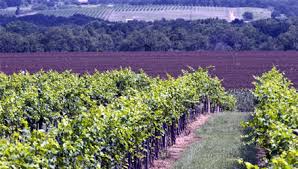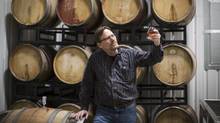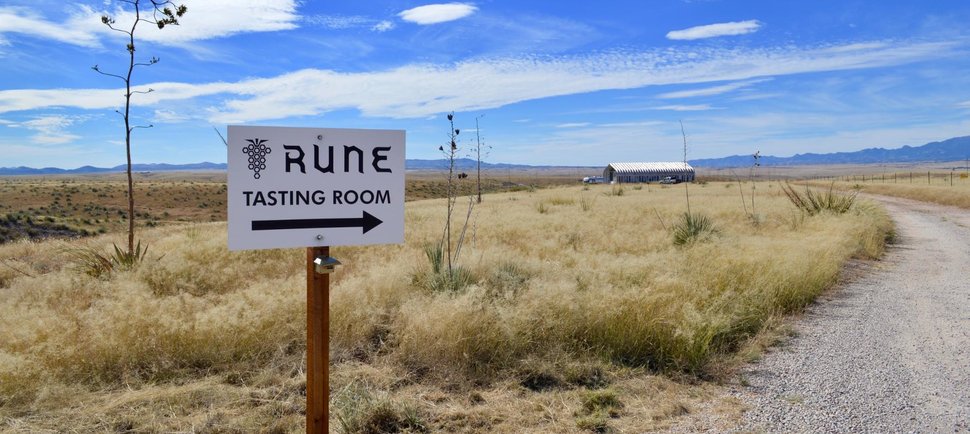The percentage of cabernet sauvignon grown in the Napa Valley continues to be on the rise. This is primarily due to economic considerations: When a vineyard owner can get 2 to 10 times more for cabernet grapes than any other alternative varietal, then there really is often no other choice.
In the 1960s and ’70s it was not uncommon for Napa Valley vineyards to grow pinot noir, Napa Gamay, zinfandel, petite sirah, gray or white Riesling, chenin banc and Gewürztraminer, but because of consumer preferences and the economic realities of modern-day wine-growing and -making, these have been mostly replaced.
For those vintners interested in gaining high scores from their Napa Valley wines, there is only one varietal to consider — cabernet sauvignon. For those producers looking to maximize their bottle price there is also only one option — cabernet sauvignon. So from growers to winemakers and owners, each is almost forced into growing and making cabernet sauvignon. And that’s fine for the most part because Napa cabs can be spectacular, full of jammy black fruit and silky tannins.
For those rare Napa vintners who venture beyond cabernet and chardonnay, however, the world can be a cold and lonely place. But it is often within this dark wilderness that the Napa Valley seems to express its raw and wild roots, where history and potential merge and create something wonderfully different and delicious.
One of my personal favorite trends is a newfound interest in chenin blanc. A few producers are making a few cases of the wonderfully expressive white wine: Casa Nuestra, Chappellet and John Skupny, the proprietor of Lang & Reed Wine Co.
“When my wife, Tracey, and I arrived in Napa in the early 1980s there were about 2,000 acres of chenin blanc and 1,600 of chardonnay,” Skupny said. “Now there’s probably over 7,000 of chardonnay and only 14 acres left of chenin blanc. I feel lucky to have access to some of it.”
Tasting the 2015 Lang & Reed Chenin Blanc ($27 per bottle) makes it clear why this varietal was so widely planted even up to a generation ago. The bright, light-straw-colored wine is full of aromas of dried white peach and mango and waxy honeycomb, with flavors of red apple and quince that culminate in a refreshing tartness.
Another of what used to be a common varietal but is now pushed near extinction are the old-head-trained zinfandel vineyards that used to dot the valley, their vines often propped up, as if leaning on canes, with sinewy redwood stakes.
A few of these vineyards survive, including two of the most spectacular: the Hayne Vineyard in St. Helena (Chase Cellars) and the Aldo’s Vineyard (owned by the Robert Biale Winery) in Napa. The pressure on these decades-old vineyards is staggering. Often surrounded by encroaching cabernet sauvignon vineyards, or in the case of the Aldo’s Vineyard completely surrounded by a subdivision, these stalwart vineyards stand as fortresses against the trend toward homogenization, each vineyard producing some of the finest wines in the valley.
“The Biale family is totally committed to keeping these wonderful vineyards intact,” said Tres Goetting, winemaker at Robert Biale Vineyards. “I love these old-vine zins because there is really nothing else like them. Zinfandel in general, and old vines in particular, can produce wines that never cease to amaze me in their complexity and depth. Every single old vine, be it this varietal or any others, is like a sacred old soul that has so much to say if we’d just take some time and listen. When they’re gone, they cannot be replaced.”
If you don’t know Chase Cellars or the wines from Biale, I suggest you take time and go taste some of these stunning examples of what zinfandel and other varietals can aspire to.
If you do go to Biale winery, you’ll learn about the story of the “black chicken,” which was a secret code during Prohibition. Customers placing their order for eggs, zucchini and milk from the Biale farm might also include a request for one or more black chickens, which actually meant a gallon of wine. Today you can still order one of these delicious black chicken wines — and now without risk of imprisonment.
Any of the Biale wines are worth seeking out, but it is the Aldo’s zinfandel that reaches the absolute pinnacle of achievement for California zinfandel. The grapes come from a head-trained, non-irrigated vineyard planted in 1937. Boxed in by tract houses, the Aldo’s Vineyard produces a wine that is as nuanced and mysterious as any in the world. You think I’m kidding? Go ahead, find yourself a bottle of the 2013 Aldo’s Vineyard Zinfandel (if you can, they are now sold out) and try it for yourself.
The Aldo’s Vineyard produces garnet wine that is full of aromas of dried figs, Worcestershire sauce and spiced rum. On the palate this wine sings with baked cherry and blackberry cobbler, clove-infused dark chocolate and sweet plum syrup. The finish of this wine is stunningly long with hints of black tea, pepper and red-ripe raspberries that urge you on to another sip.
The Napa Valley is full of amazing stories and produces many spectacular wines, most made by passionate people who have their own special stories to tell. But few can speak through the voice of older vineyards or more diverse varietals. My hope is that we all find time to seek out and support the efforts of those vintners and winemakers who are fighting the good fight because if we don’t, these pieces of history will be lost forever, replaced instead by a tract house or another cabernet sauvignon vineyard.
Click here to view original web page at napavalleyregister.com






